
WHAT IS IT
Think of this as a McLaren 570S that has spent all winter in the gym. Harder, faster, leaner and meaner, the 600LT is the fourth Longtail model from Woking’s skunkworks and is undoubtedly the most accessible. We like that.

WHY WE'RE TESTING IT
We were given the opportunity to stretch the 600LT’s legs on track at the Hungaroring. A McLaren on a bona fide F1 circuit? That’s a hard invitation to turn down.
MAIN RIVALS
Ferrari 488 Pista, Lamborghini Huracan Performante, Porsche 911 GT3 RS
THE WHEELS VERDICT
We have to qualify this verdict as we’ve only driven it on a super-smooth F1 circuit, but the McLaren 600LT seems the real deal. Searingly rapid yet surprisingly approachable for a bona fide carbon-tub supercar with 441kW and doors that open upwards, the 600LT may look closely related to the 570S, but it feels markedly different. It’s more direct, more alive and just flat-out angrier. It’s a gem.
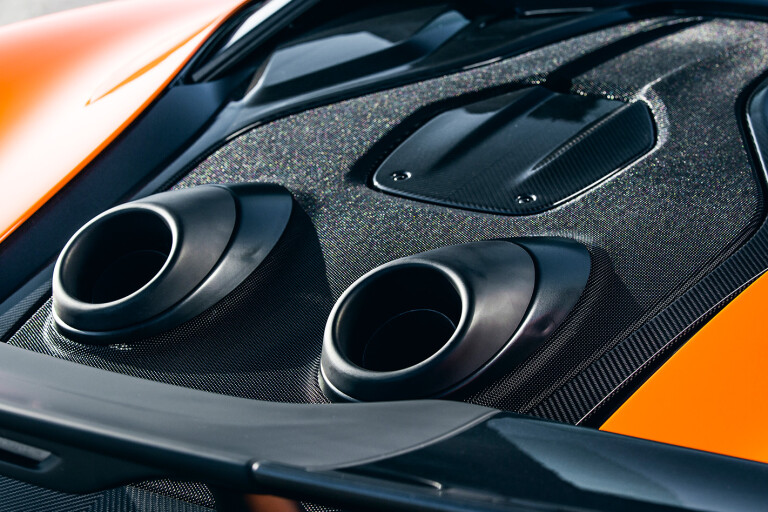
PLUS: Sharp responses; amazing steering; linear power delivery; chassis exploitability; flames from top-mounted exhausts
MINUS: Engine not overly tuneful; interior can look underdone without optioning
THE WHEELS REVIEW
MAX VERSTAPPEN calls the Hungaroring a Mickey Mouse track. Danil Kvyat reckons it’s a bit too narrow for modern F1 cars. They might well be right, but in a McLaren 600LT, it’s electrifying. All those things that GP jockeys hate – the guardrail proximity, the patchy runoff, the weird sightlines, the linked sequences of bends that make overtaking almost impossible – don’t really matter when you’ve got the track to yourself in a 441kW road car that weighs just 1356kg.
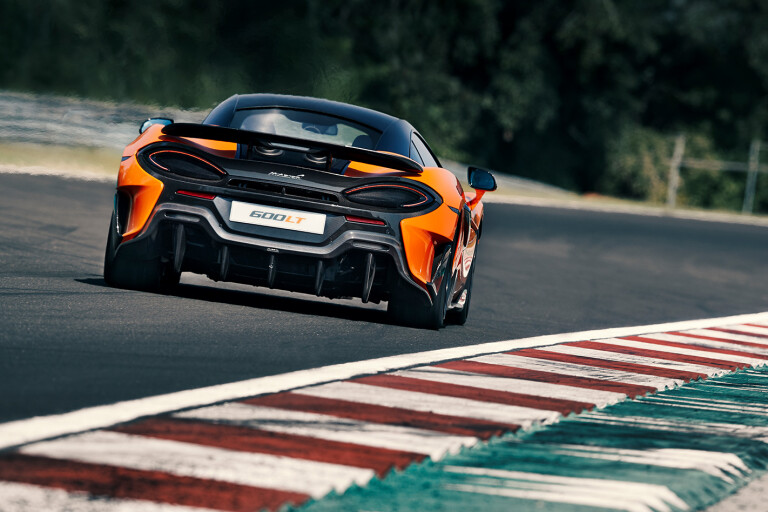
The 600LT is not a difficult car to understand. Take a 570S and just tweak virtually every dynamic criterion. Aero, brakes, track width, power, torque, spring rates, roll bar width, breathing, weight, tyres – you name it, it’s been amped up by a few percent. You might consider these marginal gains, but fully 23 percent of the 600LT is different to the 570S and it shows. The sighting laps of the 4.4km circuit were conducted in a 570S. Jump from that into the 600LT and the former feels rubbery and dull in its responses. It’s anything but, and we rate the 570S very highly as a road car, but on track the 600LT is night and day better. It’s sharper, fiercer, more playful and just a bigger, more three-dimensional personality.
Don’t put too much credence in McLaren’s claim that 100kg has been excised from the Sports Series to create the 600LT. Yes, it is possible to slice that amount from the 570S’s figure, and McLaren claims that a hundred kegs less is more beneficial than another 60PS (44kW) due to the virtuous circle of lighter weight requiring lighter componentry, but you’d need to delete the air conditioning and audio system and nobody’s about to do that. Few will go for the fixed bucket seats either. By the time you put the stereo back in, you lose the benefit of a cut-down lightweight loom. Most customer cars will weigh around 60kg less than a 570S.
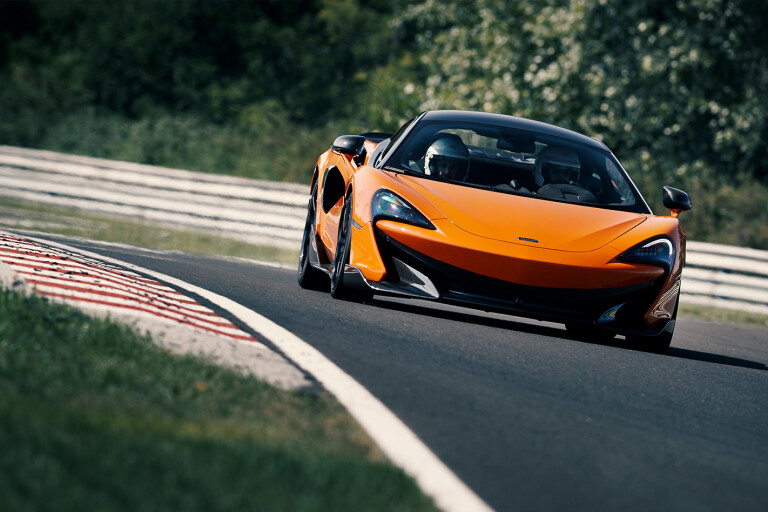
You’ll feel each and every kilogram of the car barrelling into Turn One. Switched into Track mode, you get a set of shift lights that are blazing blue as the speedo shows 255km/h and you jump on the brakes just past the 200m board. The 390mm carbon ceramic front discs are borrowed from the 720S and are augmented by a brake booster developed from the Senna’s. The pedal feel is firm and you can hit it hard without worrying about the 600LT weaving under braking as you might in a 570S. At this speed, the LT’s fixed aero package is creating 100kg of downforce as you jump on the picks, reducing front pitching.
Flick the carbonfibre paddle shifter down through three gears, and the top-mounted exhaust’s blare right behind your head drenches the cabin in sound. The M838TE 3.8-litre V8 isn’t a melodic powerplant, but it sounds purposeful and raw here, twin gouts of blue flame occasionally issuing skywards like foot-long candles. It’s warm on track, 34 degrees, and the specially designed P-Zero Trofeo Rs find no shortage of purchase on the hotmix.

You’ll need to trail the brakes gently into the broad hairpin before gradually feeding throttle. The 600LT can feel scrappy if it’s driven clumsily or bullied through corners. It has its own cadence that you’ll need to key into, which is quick and smooth. The hydraulically assisted steering doesn’t change no matter which powertrain or handling mode you’re switched into. That’s a good thing, because it’s the best steering in its class by a significant margin; clean, feelsome and with the sort of feedback you thought was a thing of the past. A stiffer torsion bar in the rack and a ratio that’s four percent quicker than the 570S make the front feel alert but not hypersensitive.
Darren Goddard, Sport Series Line Director, explains the logic behind McLaren sticking with ‘old tech’ hydraulic assistance. “There’s no pressure within the business to fit EPAS (electric power assisted steering) to our cars, but there is pressure from the industry as a whole, because everything now is going that way,” he says. “We tried different manufacturers’ EPAS systems and didn’t like them. The Lamborghini Huracan? Ugh. Porsche’s is about the best, but it doesn’t have the on-centre feel. They’re trying to replicate a lot of characteristics that we don’t have to.”
The steering’s helped by the tyre, which McLaren has specially developed in conjunction with Pirelli, rejecting a couple of design iterations until the combination of huge belt stiffness with a slightly softer-than-normal sidewall was achieved. Turn-in is crisp, with hardly a sniff of understeer. “Getting the roll stiffness right at the rear was key to giving this car the front end it has,” claims Goddard, alluding to the rear roll bar that’s increased in stiffness by 25 percent. The front bar is 50 percent stiffer than 570S and spring rates have increased by 14 percent front and 34 percent rear to give a similar overall stiffness to the previous Longtail model, the 675LT. It corners flat and hard, but with just enough roll to telegraph its limits. The 600LT will lap this track quicker than the 675LT, despite being a little slower in terms of outright acceleration.
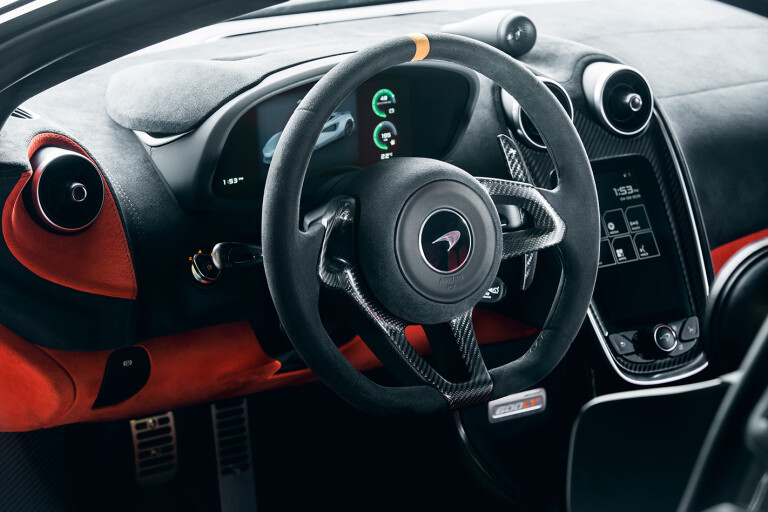
Mid-corner, you’re rolling off brakes and onto power as you home in on the apex. In Sport powertrain mode, big throttle openings will see the car mete out only as much torque as the rear tyres can deploy, which can make it feel laggy on corner exit. Switch to Track mode and it’s a lot more hands-off. That ‘lag’ was the software, taken from Bosch’s standard map and developed in-house by McLaren, protecting you from yourself.
In Track, you feel the limit of grip more cleanly, and you also get Inertia Push – above 5000rpm and from 60 percent throttle input – which means that when the transmission is upshifting, the next gear is preselected and energy built up in the flywheel and rotating/reciprocating engine components is scavenged. The effect is such that rather than there being a lull when flicking up a gear, there’s virtually no let-up in acceleration. Track delivers quicker and smoother gearshifts than Sport mode, which introduces a momentary pause that can shock the driveline.
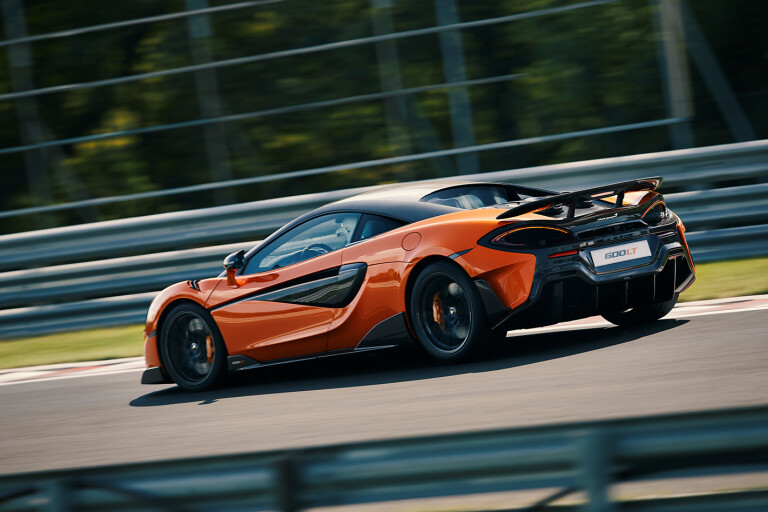
Due to the fact that the power delivery is so linear, the 600LT never feels crushingly accelerative or boosty like a heavily turbocharged 911, but the numbers don’t lie. Any rear-wheel-drive car that can dip below three seconds to 100km/h is quick. And 8.2 seconds to 200km/h is quicker than a 911 GT2 RS or a Huracan Performante. Historical point of reference? The McLaren F1, which managed 0-200km/h in 9.4sec.
In terms of outright laptimes, the 600LT will likely sit somewhere between the Performante and the Ferrari 488 Pista and, at $455,000, is more affordable than both. The 675LT was limited to 500 examples of each body style, but McLaren won’t put a figure on 600LT production plans. A Spider model will follow next year, but the only indication on how many will roll out of the MPC at Woking is that less than 20 percent of Sport Series volume will be devoted to Longtail. Those lucky few will be rewarded with the most sweetly honed, beautifully balanced road car that McLaren has ever built. How to put a price on that?
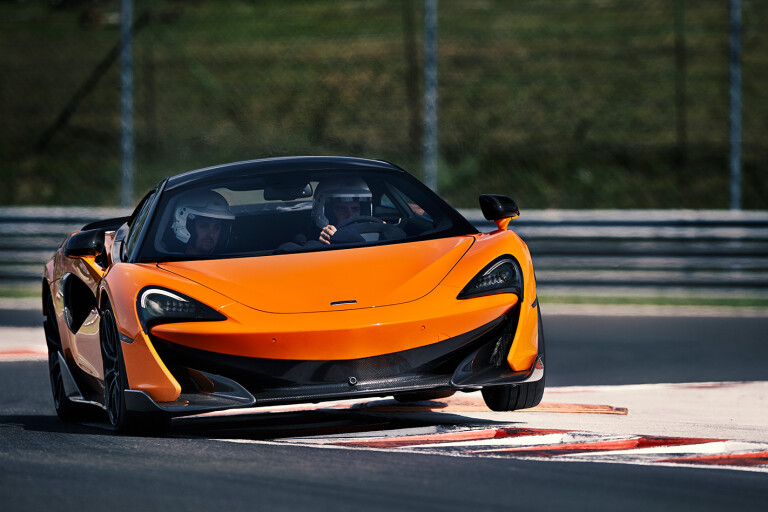
Model McLaren 600LT coupe
Model McLaren 600LT coupe
Engine 3799cc V8 (90°), dohc, 32v, twin turbo
Max power 441kW @ 7500rpm
Max torque 620Nm @ 5500-6500rpm
Transmission 7-speed dual-clutch
L/W/H/WB 4604/1930/1194/2670mm
Weight 1356kg
0-100km/h 2.9sec (claimed)
Economy 12.2L/100km
Price $455,000
On sale Now



COMMENTS